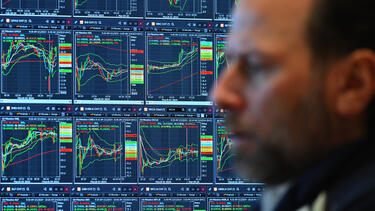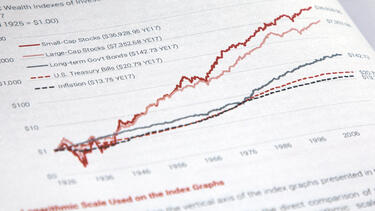The Corporation Is Centuries Older than We Thought
The genesis of the joint-stock company is usually traced to the founding of the English East India Company and the Dutch East India Company around 1600. New research co-authored by Prof. William Goetzmann says this origin story may be off by centuries.

Beauty, Power, Art, and Finance
Art, money, and power twist together in complex ways, in a dynamic that may be older than humans. In his research, Yale SOM’s William Goetzmann traces the social meaning of art and money and the ways they set pecking orders, create art superstars, and blow up into senseless bubbles.

What Does a Record Stock Market Mean?
We asked Yale SOM’s William Goetzmann, an expert on financial markets and the history of finance, what soaring stock prices say about the economy and the future of the markets.

Is the Art Market Fair to Women?
Why do women artist appear less frequently at auctions and in galleries? A study of Yale Art School graduates over 120 years, co-authored by William Goetzmann of Yale SOM, suggests that institutions pose a bigger obstacle than market participants.

Holding Up a Mirror to the First Global Stock Bubble
Yale SOM’s William Goetzmann, an expert in art and finance history, showed us satirical prints documenting the first global stock bubble, three centuries ago.

Crashes and COVID-19 in Historical Context
The stock markets are reeling as fear and uncertainty about the global pandemic grow. We asked Yale SOM’s William Goetzmann, whose research includes financial history, to put the volatility into historical perspective.

A Life in Finance: A Conversation with Prof. Roger Ibbotson
Professor Roger Ibbotson, an influential scholar and practitioner of finance for decades, sat down for a conversation with Professor William Goetzmann about his groundbreaking work on the historical returns of the stock market, his experiences as a teacher, and his current research.

Is Cryptocurrency Really a New Idea?
Bitcoin meshes digital technology with an approach to money that predates the development of cash and coin, according to Yale SOM’s William Goetzmann.

Do We Know When We’re Headed for a Crash?
A new paper looking at how investors assess the risk of a stock market crash in the next six months argues that negative media coverage of markets can play a role in investment decisions.

Can a Place Built on Global Banking Survive Britain’s Retreat from Europe?
Professor William Goetzmann discusses the uncertainty facing the financial hub at Canary Wharf as Britain moves steadily toward its divorce from the European Union.
